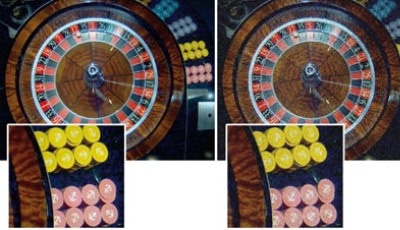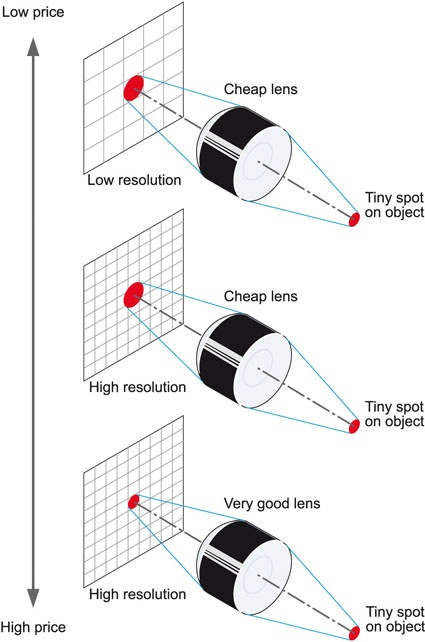Establishing How Many Pixels You Really Need
What criteria should you use to decide how many pixels you really need for your application and which camera to buy? Do you want a general overview of a scene, do you want to read ...


What criteria should you use to decide how many pixels you really need for your application and which camera to buy? Do you want a general overview of a scene, do you want to read license plates, or would you even like to be able to recognize the suits or the faces of playing cards - all from normal inspection distances?
The answers to these questions determine whether you will be satisfied with VGA, megapixel, or even multi-megapixel resolution. In the IP market, we are moving to smaller pixel sizes because a continuously growing number of pixels are being placed within a fixed sensor area. On the one hand, this trend has cost advantages. On the other hand, smaller pixels have consequences.
Good Lenses for Smaller Pixels
So how large must a pixel be to best match the resolution of the lens that projects the object onto the sensor's plane? Let's start with a very tiny spot on the object. Very good lenses transform a spot on the object to a size of 5 microns on the image plane. Cheap lenses, in contrast, might blur the spot to 15 or 20 microns. The size of the camera's pixels should not be smaller than the minimum spot size of your lens. The moral is that if you want to get the full potential from a camera with small pixels, don't use cheap optics.
With small pixels, there are special requirements for the optics. There are also tolerances that must be met with respect to mechanical alignment, such as for the lens mount, and for the precision with which the sensor must be positioned and aligned within the camera. The smaller the pixels, the tougher the targets with respect to the sensor alignment relative to the lens mount and, of course, to adjustment of the focus.
Small Pixel Area - Reduced Sensitivity
Without light, you can't collect any image information. For a given scene imaged on a sensor of a given size, the number of photons arriving at each pixel is proportional to the pixel's area. This means that to achieve the same signal-to-noise ratio, a 5 megapixel sensor requires four times as many photons as a 1.3 megapixel sensor. In general, you need good illumination to be able to work well with small pixels.
In IP applications, compressed data formats are standard. But even with compression, high resolution sensors generate large amounts of data. The user must decide whether a higher resolution is really important, especially when it comes to the layout of the network and the storage hardware capacity. Having a higher resolution might lower the maximum frame rate as well.
Before you select a camera for your application, ask yourself how many pixels you really need and what your frame rate must be. And make sure that you do not try to recover the extra money you spent on a high resolution camera by selecting a poor quality lens.
The camera's sensor must provide high sensitivity under difficult lighting conditions. Sensors with big pixels are, in most cases, the right choice for use in low light conditions. In addition, a lens with a large maximum aperture can help to collect as much light as possible.
Gather your requirements and ask a trusted camera provider to determine how many pixels you really need.
Business Partner
Basler Vision TechnologiesAn der Strusbek 60-62
22926 Ahrensburg
Germany
most read

Is Your Venue Ready for Martyn’s Law?
Martyn’s Law demands stronger security by 2027. Is your venue prepared to protect and respond?

Airbus Defence and Space: Security as a strategic pillar of Europe's defense capability
Airbus Defence and Space protects sites, technologies and employees with modern security and cyber solutions - strengthening Europe's resilience in uncertain times

VIP-Lounge Interview: Marco Mille, Global Head of Security, Siemens AG
VIP in the World of Security: Marco Mille, Global Head of Security at Siemens AG

Liverpool Heart and Chest Hospital Transforms Security with Verkada’s Hybrid Cloud Technology
NHS Trust boosts safety and efficiency with Verkada’s cloud-managed cameras and AI-powered incident response

Dormakaba: Smart Access with Spatial Experience
Smart Access at The Henderson Enabled by dormakaba Access Solutions









